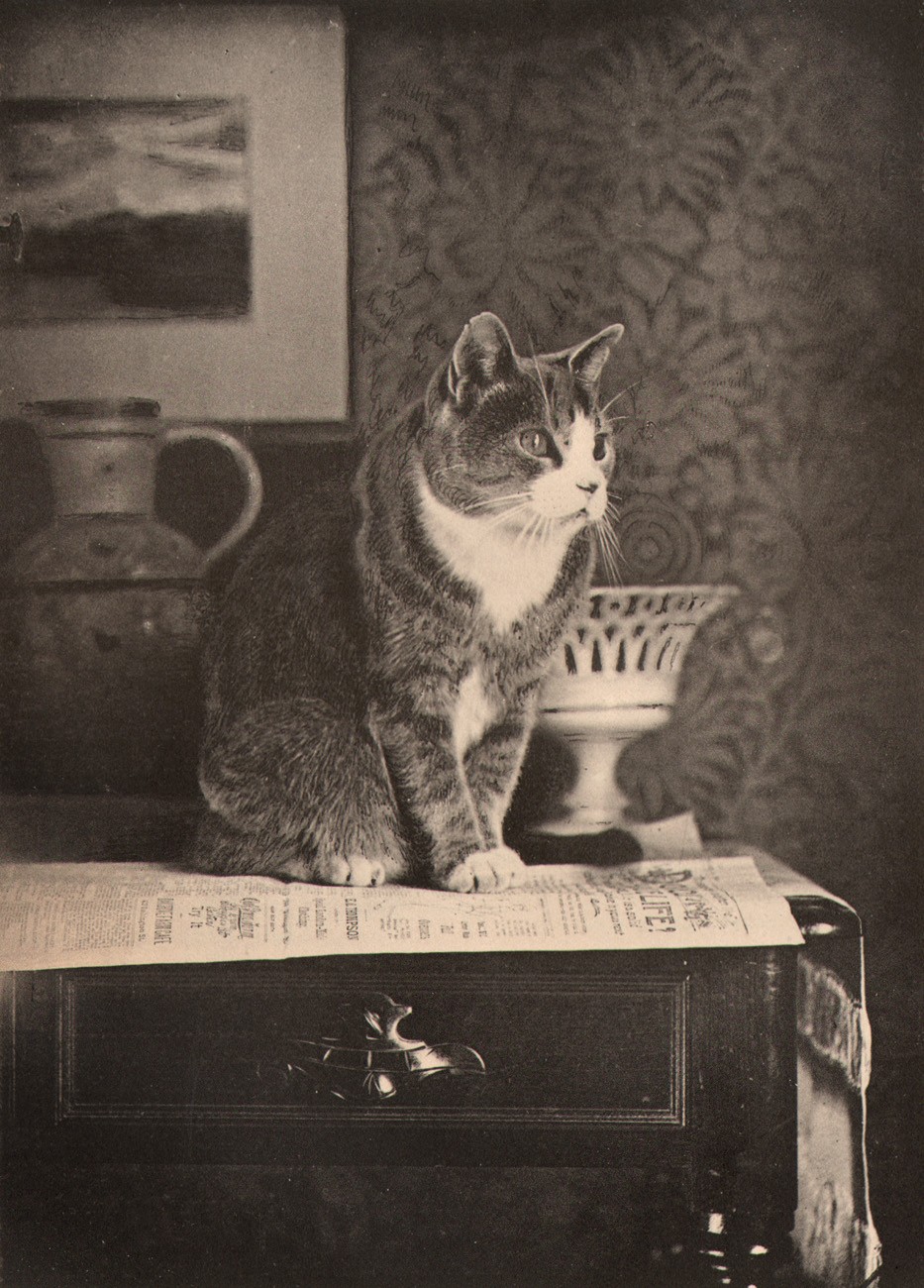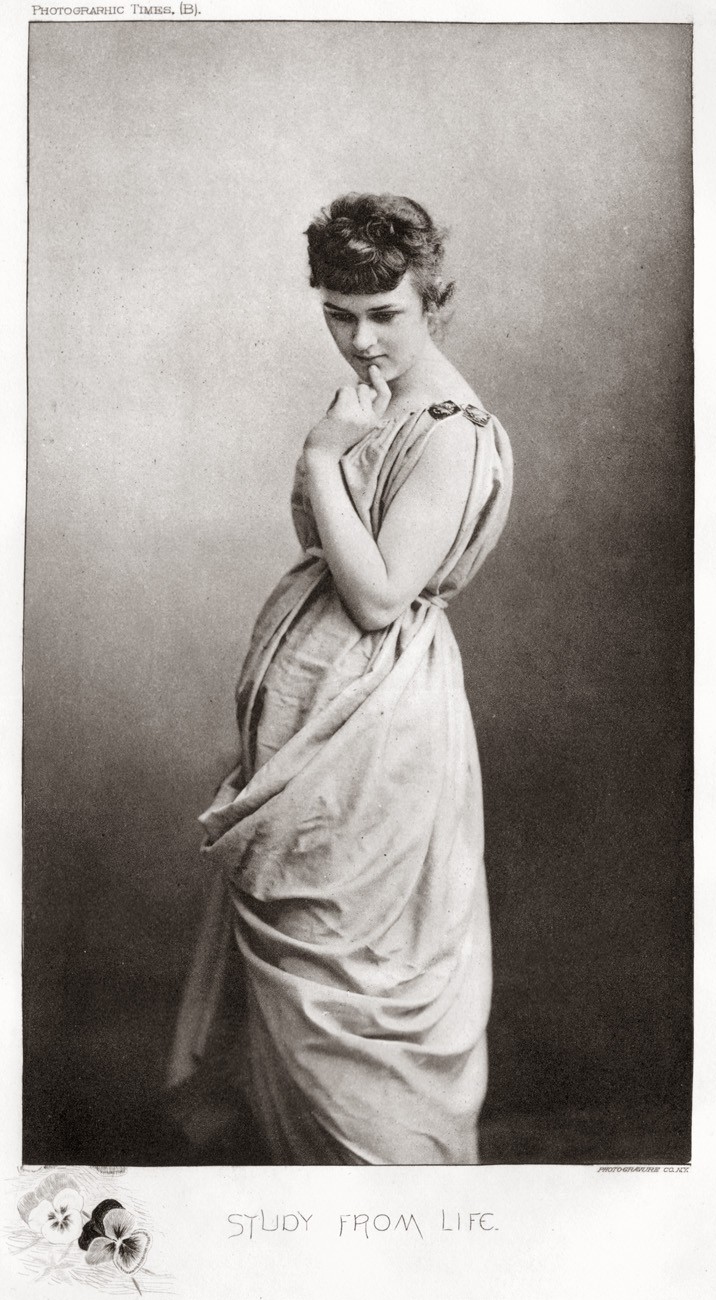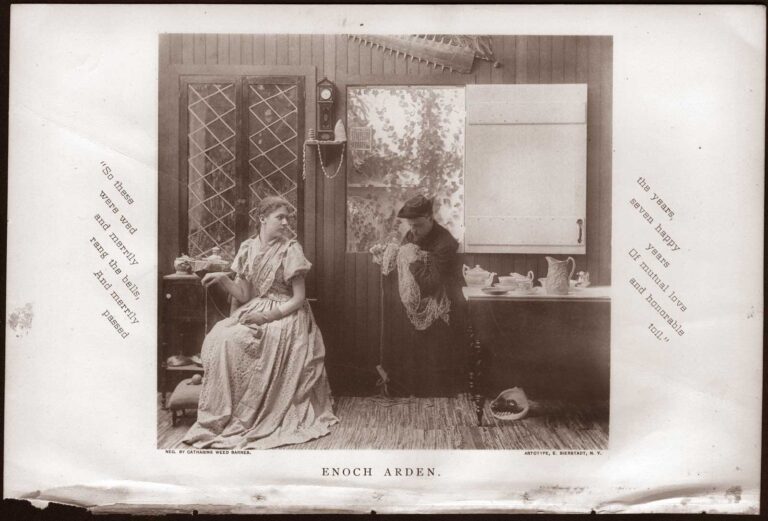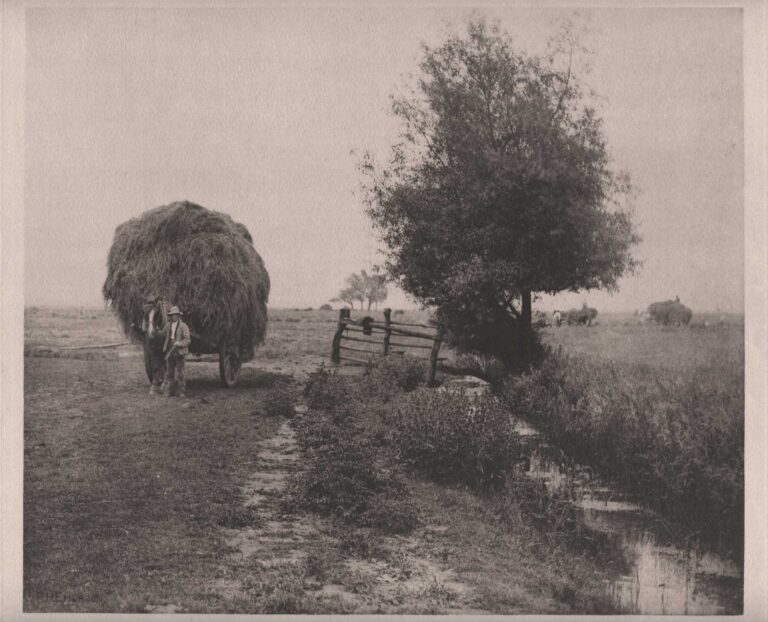
Thoughts of Puss on Life
Editorial comment on this plate:
The pretty cat picture which we give our readers this week, is from a negative by an old friend of the Times who prefers to withold his name. But it will not be less appreciated for that reason, we are sure. The author of the picture writes that it was a ”fortunate accident.” “The cat,” “he says, happened to get up on the table where she is sitting, of her own accord. As the children were very anxious to have the picture, I got the camera and placed it on a table near by, and got a good focus without trouble, as there was a window near by out of which the cat was looking. Just as I was ready to expose, she saw a bird and leaned forward very slightly to watch it. I immediately exposed, and watched carefully for the slightest sign of movement, which occurred after about four seconds; when I capped immediately. “The developer was pyro, though I have been developing generally with eikonogen of late, and find it to work extremely well. I am using hydrochinon where intensity is required ; also that or oxalate for lantern slides.”
It will be observed that the appropriate title which we have given this picture was suggested by the words which appear in the newspaper pussy is sitting on. The reproduction is a photo-type by F. Gutekunst of Philadelphia, and the author of the negative writes in regard to it: “It is in every way excellent; I like the color particularly well; exactly that of the original animal.”
And now for some Amusing Speculation
Had you ever thought of how the photographic expression “Watch the Birdie” first came into fashion? Supplanted nowadays by the ever popular “Say Cheese“, the verbal instruction to portrait subjects, principally children, may have first come into fashion sometime after 1879 when C.W. Davis of Athens, GA had trained a canary to sing on cue. (1.) Ten years later, when this photograph of an entranced cat looking at a bird outside a nearby window was taken, the idea of a feline also succumbing to a bird’s charm in order to be properly photographed is most amusing indeed.
A Novel Way of Obtaining A Pleasant Expression has lately been successfully tried by Mr. C.W. Davis, Athens, Ga. Mr. Davis has trained a canary to sing, upon a given signal. When about to remove the cap from the instrument, he gives the signal to the bird, which at once bursts forth in a sweet song. The sitter forgets all about the head-rest, the trying light, the wearisomeness of keeping a fixed position, etc. (all of which complaints are familiar to the photographer’s ear). A pleasant and unconscious expression on the face of the sitter is the result of the little bird’s melody. The idea is a good one, and we think might be put in practice by others. (1.)
1. from: The Philadelphia Photographer: edited and published by Edward L. Wilson: Philadelphia: Vol. XVI, No. 187: July, 1879: p. 211
“hand work” to select areas of background wallpaper as well as cat’s fur



